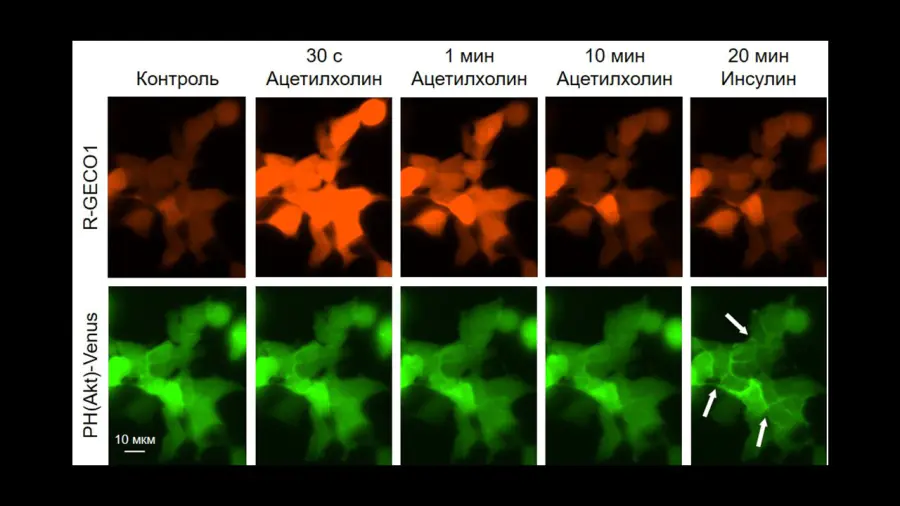Laboratory of Molecular Cell Physiology
Stasnislav S Kolesnikov
In the course of life, cells perceive external signals and generate responses to them. These processes are interconnected by an endless network of ordered and interconnected transformations of intracellular molecules, which are generically called intracellular signaling. Our laboratory is studying the mechanisms of signal transmission from the receptor deep into the cell using physiological experiments on single cells.
The most interesting object for the study of intracellular signaling systems are sensory cells. Taste cells, in response to stimulation by taste molecules, are excited and transmit information about its qualities to the taste nerve. The main stages of the mechanism of forming a taste stimulus signal have been established, but there are many questions that have not yet been answered. Our work is designed to fill in the gaps in understanding the intracellular processes underlying the formation of taste at the earliest stages of perception
Non-excitable cells also perceive external signals, and the mechanisms of their transmission into the cell have not been fully studied. Unlimited possibilities for the study of such processes are provided by cells of culture lines, into which new molecules can be "embedded" or existing ones can be "turned off".
It should be noted that the methods of studying intracellular signaling are universal and can be applied to cells of any type. Our laboratory has developed unique techniques for recording cell ion currents (patch clamp), monitoring intracellular calcium (Ca2+-imaging) and other signaling molecules, photolysis of chemical groups (uncaging), as well as their simultaneous use. Using the methods of molecular and cellular biology, we "embed" or "turn off" the receptors or other molecules of interest in cells, and we also get new cell lines carrying fluorescent sensors of key signaling molecules. Using these methods and tools in a complex, we obtain unique data on the mechanisms of intracellular signal transmission, which expand fundamental concepts and form the basis of mathematical models of cell functioning.
- Mathematical modeling
- The method of local potential fixation (Patch clamp)
- Monitoring of intracellular molecules using fluorescent probes and sensors (Ca2+, cAMP, etc.)
- Work with eukaryotic cells: transfection, obtaining stable cell lines
- CRISPR/Cas9 Genome Editing Technology
Research directions
Testing of medicinal compounds using sensor cells

Obtaining model cellular systems for the study of signaling processes

Signaling processes in the taste bud




